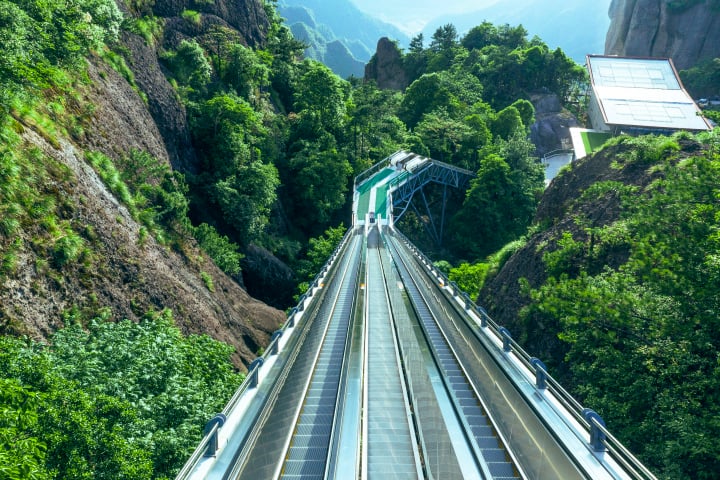Adorned with colorful accessories and shiny fixtures, the Jeepney buses of the Philippines are probably the most flamboyant means of public transportation in the world, rivaling even the art trucks of Pakistan.
Jeepneys are the most popular means of transportation in the Philippines, and are considered a symbol of the archipelago, despite recent controversy regarding their heavily-polluting emissions. The history of Jeepney buses dates back to the final days of World War II. When American forces withdrew from the Philippines, they either left behind or sold hundreds of surplus jeeps. The country’s public transportation had been destroyed by the war, so people started modifying the jeeps to accommodate more passengers and classified them as passenger-style jeeps. Recognizing the wide-spread use of these new vehicles, the Filipino government soon regulated their use.

Photo: brdavid
But apart from simply stripping down the jeeps, increasing the number of seats and adding roofs for cover, Filipinos also started adding colorful and shiny ornaments, and using the car’s metal body as canvas for painted or airbrushed images of personal significance, or adverts. The Jeepney became a part of Filipino culture, and an inexpensive means of transportation for the country’s proletariat. Although the original buses were refurbished American surplus jeeps, nowadays, Jeepneys are produced by independent companies and workshops in the Philippines, with surplus engines and parts imported from Japan.

Photo: nishir_rana
Despite their popularity both with the local population and with tourists, Jeepney buses have been under fire for some time, and their existence in their current form is under threat. Because they increase traffic volume and consume considerable fuel, Jeepneys are faced with increasing restrictions and regulations for pollution control. A recent study showed a 16-seat Jeepney consumed as much fuel as a 54-seat air-conditioned bus, and that only amplified pressure to remove them from the streets of Manila and other major cities.

Photo: whl travel
But the future of these brightly decorated vehicles may not be as grim as it first appears, as E-jeepneys, short for “electrical jeepneys”, could carry on this half-a-century-old tradition. A few of them have already been produced in the Philippines and are currently being used by schools, resorts and theme parks.

Photo: zanzo

Photo: dachlan

Photo: monojussi













